South German Engraver
A pack of 52 cards with banner 10s, female 'Sotas', horsemen and kings, the pack was engraved in the new Plateresque style for a royal wedding.

A craftsman known as the “South German Engraver” produced this elaborate Plateresque (in the manner of the silversmith) interpretation of the Spanish-suited pack which appears to commemorate the marriage, in 1496, of Felipe I of Spain and Doña Juana, daughter of Ferdinand and Isabella. The Plateresque artistic movement was popular amongst the ruling classes of Imperial Spain, following the Reconquista and the beginning of the colonisation of the Americas, but was usually applied to architecture.
Sometimes referred to as Schongauer's follower, the engraver worked the same way as most of his colleagues of the time: he copied and re-worked other engravers, as well as other playing cards and popular images. Some of the court figures have been adapted from other sources where they might have held a falcon rather than the present suit symbol.
(Click here to see enlargement and engraver's monogram)
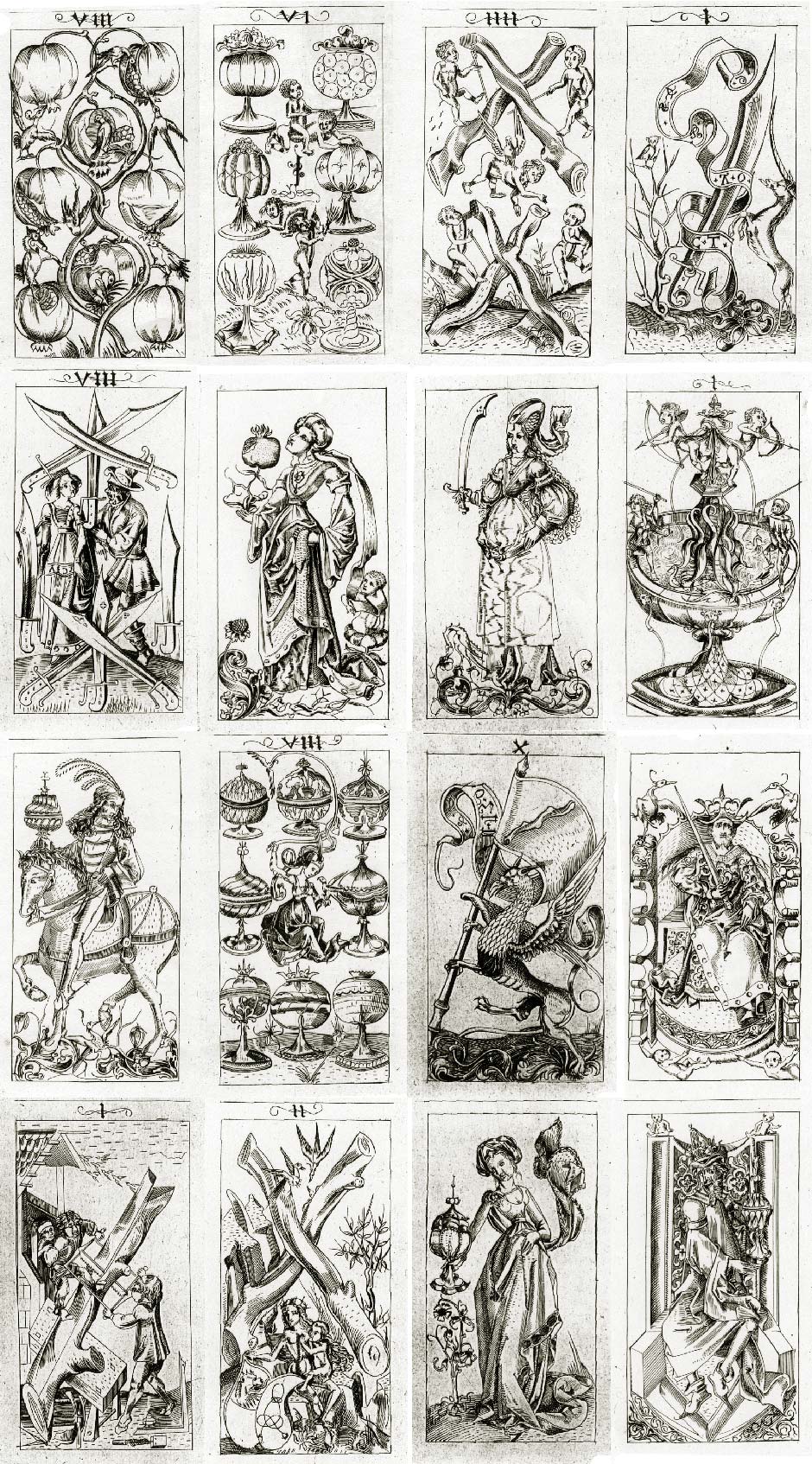
The pack conforms to an archaic format of 52 cards with numeral cards running from 1 to banner 10s, female 'Sotas' or maids (not queens), cavaliers and kings. A number of other packs with similar characteristics survive elsewhere. As can be seen, these late gothic playing cards are decorated - not quite 'transformed' - with birds, animals, plants, children and other miniature creatures. The suit sign of pomegranates probably alludes to the recently reclaimed kingdom of Granada. Several original examples of this pack are known, although none are coloured, and facsimile editions have also been produced.
A sheet with facsimile illustrations of nine cards appeared in Johann Gottlieb Immanuel Breitkopf’s “Ursprung der Spielkarten”, 1784.
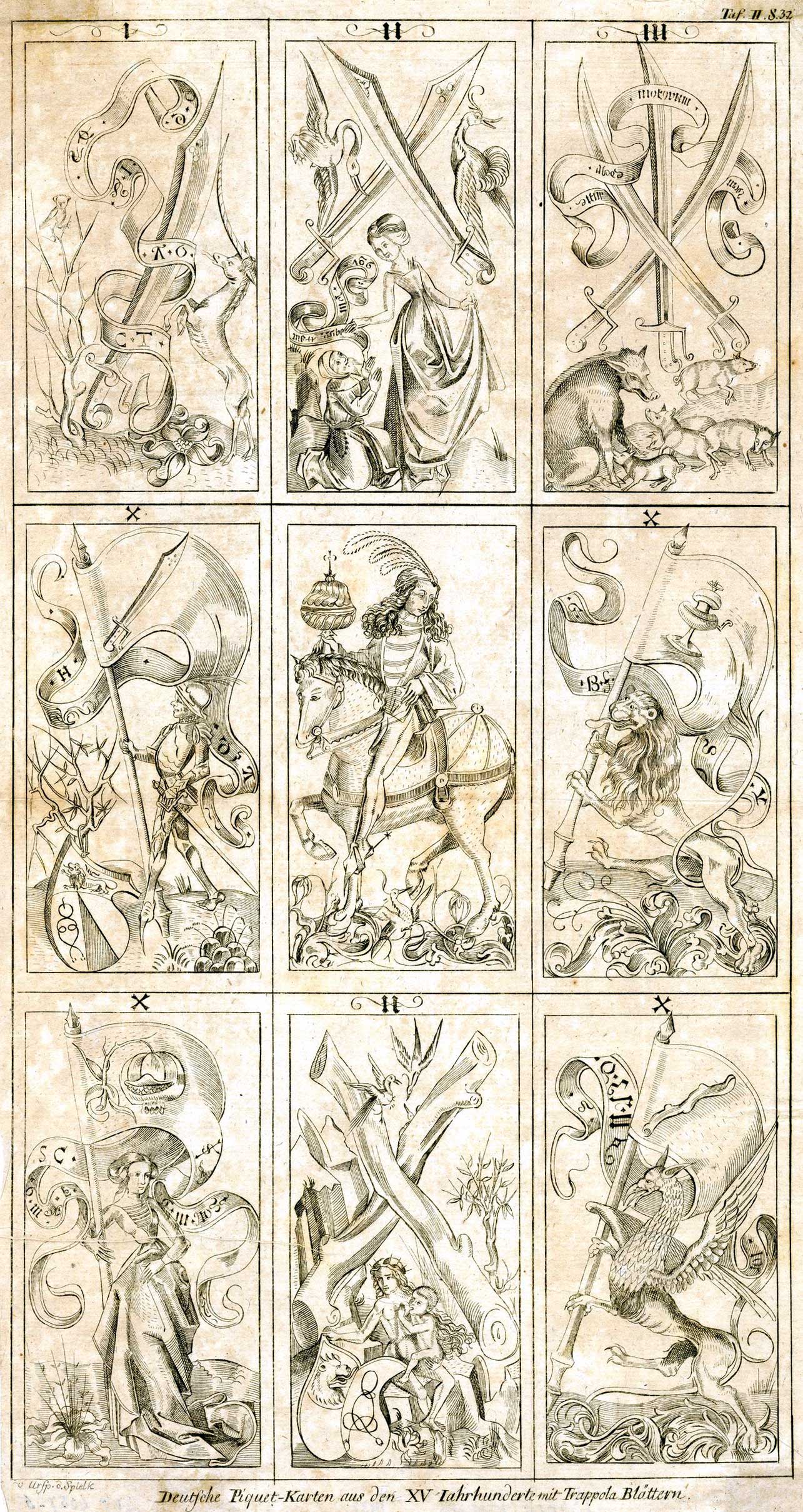
Above: a facsimile copy published by Johann Gottlieb Immanuel Breitkopf, Leipzig, 1784. © The Trustees of the British Museum • number 1896,0501.1431►
Breitkopf’s “Ursprung der Spielkarten” (Attempt to research the origin of playing cards, the introduction of linen paper and the beginning of woodcutting in Europe), Leipzig, 1784, can be consulted online here►
See also:
The Upper Rhine Master of the Banderoles Early German Engraved Cards Gothic Spanish-suited Playing Cards Ambras Hunting Pack The Stuttgart Pack History Hunting Germany Spain Italy Portugal Master of the Playing-Cards Master PW Circular Playing Cards.
By Simon Wintle
Spain • Member since February 01, 1996 • Contact
I am the founder of The World of Playing Cards (est. 1996), a website dedicated to the history, artistry and cultural significance of playing cards and tarot. Over the years I have researched various areas of the subject, acquired and traded collections and contributed as a committee member of the IPCS and graphics editor of The Playing-Card journal. Having lived in Chile, England, Wales, and now Spain, these experiences have shaped my work and passion for playing cards. Amongst my achievements is producing a limited-edition replica of a 17th-century English pack using woodblocks and stencils—a labour of love. Today, the World of Playing Cards is a global collaborative project, with my son Adam serving as the technical driving force behind its development. His innovative efforts have helped shape the site into the thriving hub it is today. You are warmly invited to become a contributor and share your enthusiasm.

Leave a Reply
Your Name
Just nowRelated Articles
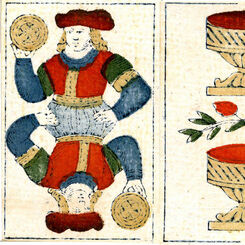
Clemente Roxas double-ended Spanish pack
Double-ended Spanish-suited playing cards published by Clemente de Roxas in Madrid, 1814.
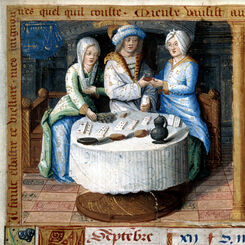
Gambling and Vice in the Middle Ages
Gambling and Vice in the Hours of Charles V: card-playing in the local tavern
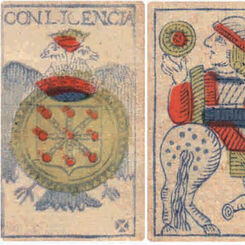
Navarra Pattern, 1793
Navarra pattern by an unknown cardmaker with initials I. I., 1793.
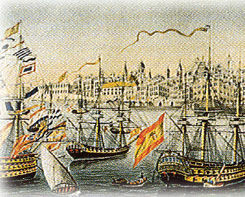
Cádiz Pattern playing cards
A popular Spanish playing card pattern widely exported to Spanish-influenced markets.

Master of the Playing Cards
Animal suited playing cards engraved by the Master of the Playing Cards, Germany, c.1455

XV Century Catalan playing cards
XV Century Catalan Playing Cards, featuring four female Sotas, four Aces and four cards from the sui...
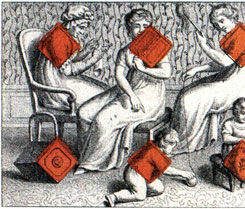
Cotta Transformation playing cards
In 1804, J.G. Cotta, a publisher and bookseller in Tübingen, Germany, produced the first set of tran...
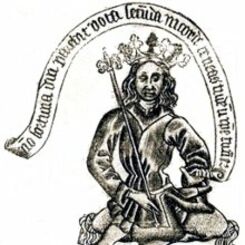
Master of the Banderoles
Playing Cards by the Master of the Banderoles, one of the earliest professional printmakers.

Baraja de Amor
Hijos de José Garcia Taboadela was a book-seller who also published this charming pack of lovers' fo...

Sanmartí, 1840
Sanmartí, 1840.
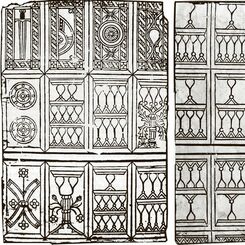
Moorish playing cards
These two uncoloured, uncut sheets of early Moorish playing cards were formerly preserved in the Ins...

Gothic Spanish-suited cards
These cards may be a typical example of early 'standard' Spanish playing cards, maybe from before Co...

Spanish Playing Cards ~ La Baraja Española
Spain has played a pivotal role in the history of playing cards in Europe and Latin America.

Zoo Comics
ZOO COMICS animated playing cards made by Litografía Ferri, Valencia (Spain), first published in 196...

Baraja Morisca — Early XV century playing cards
Primitive Latin suited pack, dated by paper analysis as early XV century, which makes this one of th...
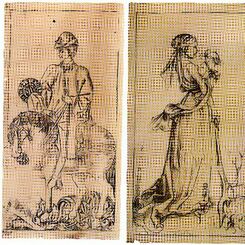
Early German Engraved Playing-cards
During the second half of the fifteenth century, with printing technology commercially established a...

Playing cards in the Upper Rhine region
Documentary evidence suggests that card playing established itself in Italy in 1376, and then spread...

16th century cards discovered in Peru
Fragments of playing cards and 2 dice were unearthed in a 16th century rubbish tip adjace...
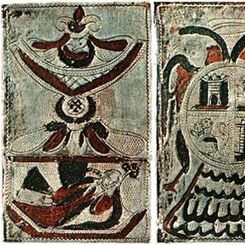
Silver Cards from Peru
Spanish-suited silver cards, richly embellished and enamelled, from a former Spanish Viceroy in Peru...
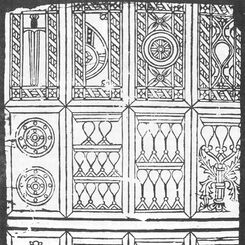
A Moorish Sheet of Playing Cards
This article was originally published in “The Playing-Card”, the Journal of the International Playin...
Most Popular
Our top articles from the past 60 days


 Your comment here. Your comment here. Your comment here. Your comment here. Your comment here. Your comment here. Your comment here. Your comment here. Your comment here. Your comment here. Your comment here. Your comment here. Your comment here. Your comment here. Your comment here. Your comment here. Your comment here. Your comment here. Your comment here. Your comment here. Your comment here. Your comment here. Your comment here. Your comment here. Your comment here. Your comment here. Your comment here. Your comment here. Your comment here. Your comment here. Your comment here. Your comment here.
Your comment here. Your comment here. Your comment here. Your comment here. Your comment here. Your comment here. Your comment here. Your comment here. Your comment here. Your comment here. Your comment here. Your comment here. Your comment here. Your comment here. Your comment here. Your comment here. Your comment here. Your comment here. Your comment here. Your comment here. Your comment here. Your comment here. Your comment here. Your comment here. Your comment here. Your comment here. Your comment here. Your comment here. Your comment here. Your comment here. Your comment here. Your comment here.




















